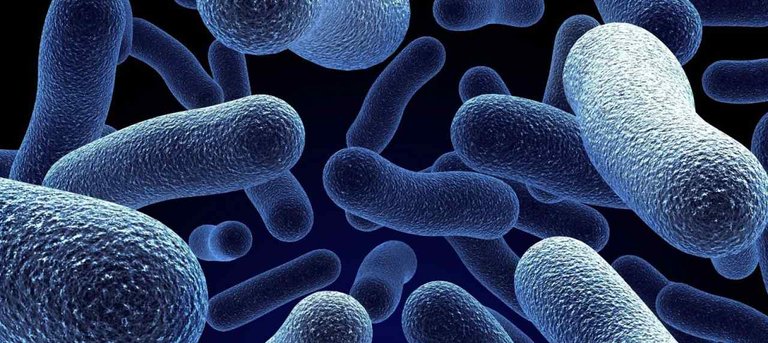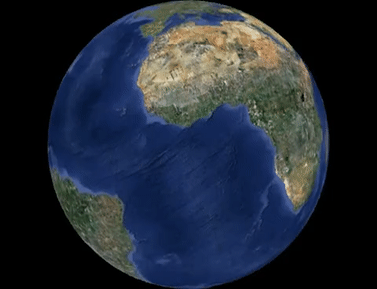
Source
The Gaia hypothesis is an interpretive model formulated by the chemist James Lovelock in 1969, its name derives from the Greek goddess of the Earth and proposes that it is the very presence of life on Earth that regulates the essential conditions for its development , such as the temperature, chemical composition or salinity of the oceans.
La hipótesis Gaia es un modelo interpretativo formulado por el químico James Lovelock en 1969, su nombre deriva de la diosa griega de la Tierra y propone que es la misma presencia de la vida en la Tierra la que regula las condiciones esenciales para el desarrollo de ésta, tales como la temperatura, composición química o salinidad de los océanos.
Before this theory was formulated, it was believed that the Earth offered the necessary conditions for life and that what organisms did was adapt to these conditions but, according to the Gaia hypothesis, given minimum conditions for the proliferation of the first organisms, it is the life itself who regulates the conditions for its existence.
Antes de formularse esta teoría se creía que la Tierra ofrecía las condiciones necesarias para la vida y que los organismos lo que hacían era adaptarse a estas condiciones pero, según la hipótesis Gaia, dadas unas condiciones mínimas para la proliferación de los primeros organismos, es la propia vida quien regula las condiciones para su existencia.

Source
This seems to be confirmed if we look at the animation published by the Department of Biogeochemical Integration of the Max-Planck Institute in Germany (header image) from data obtained from satellite observations and carbon monitoring stations located around the world.
Esto parece confirmarse si observamos la animación publicada por el Departamento de Integración Biogeoquímica del Instituto Max-Planck de Alemania (imagen de cabecera) a partir de los datos obtenidos de las observaciones de satélites y estaciones de monitorización del carbono situadas por todo el mundo.
In this animation you can see how plants absorb and release CO2 according to the seasons of the year, it gives the sensation that the Earth inhales and exhales carbon dioxide in a process very similar to the breathing of living beings, especially it is seen in the temperate latitudes of Europe and North America where seasonal changes are most marked.
En esta animación se puede ver como las plantas absorben y liberan el CO2 de acuerdo con las estaciones del año, da la sensación que la Tierra inhala y exhala el dióxido de carbono en un proceso muy parecido a la respiración de los seres vivos, sobre todo se ve en las latitudes templadas de Europa y Norteamérica donde los cambios estacionales son más marcados.

Source
From this animation it can be deduced that plants are something vital for our survival, as is the case with the phytoplankton that covers the planet's oceans, but phytoplankton does not undergo such drastic seasonal changes, which is why it is more difficult to include it in the entire analysis process of data used to generate this animation.
De esta animación se deduce que las plantas son algo vital para nuestra supervivencia lo mismo que ocurre con el fitoplancton que cubre los océanos del planeta, pero el fitoplancton no sufre cambios estacionarios tan drásticos por lo que resulta más difícil incluirlo en todo el proceso de análisis de datos utilizados para generar esta animación.
In short, that the Earth as a whole is a living organism, so we should be more careful with the environment and with the living organisms that surround us, although, after all, the human being is also an organism created by the very nature which he now destroys. Paradoxical!
En definitva, que la Tierra es en su conjunto un organismo vivo por lo que deberíamos ser más cuidadosos con el medio ambiente y con los organismos vivos que nos rodean aunque, al fin y al cabo, el ser humano es un organismo más creado por la misma naturaleza a la que ahora destruye. ¡Paradójico!
More information/Más información
https://www.livescience.com/carbon-sinks-globe-animation
https://gruposaedal.com/la-tierra-inhala-y-exhala-carbono-en-fascinante-animacion/
Saludos @mauromar algunas culturas antiguas consideran que el planeta no solo tiene vida sino hasta un espíritu… quien sabe quizás nuestras culturas no son merecedoras de ese conocimiento.
Hola @mauromar, que lastima que nosotros seamos el mal del planeta que nos da la vida.

Congratulations @mauromar! You have completed the following achievement on the Hive blockchain and have been rewarded with new badge(s):
You can view your badges on your board and compare yourself to others in the Ranking
If you no longer want to receive notifications, reply to this comment with the word
STOPCheck out the last post from @hivebuzz:
Support the HiveBuzz project. Vote for our proposal!
Es muy chula la animación del mundo respirando. Según eso todo es cíclico, un sistema autorregulado. La hipótesis de Gaia creo que va a un nivel más como si toda la vida formara parte de un único organismo... me parece más ciencia ficción que otra cosa.
Ahora lo verde mola. ;-)
Ahora lo verde mola. ;-)
very very interesting. that animation really is nice and makes u view earth as a living thing. I hope everyone can do what is needed to keep the earth 'breathing' good! :)